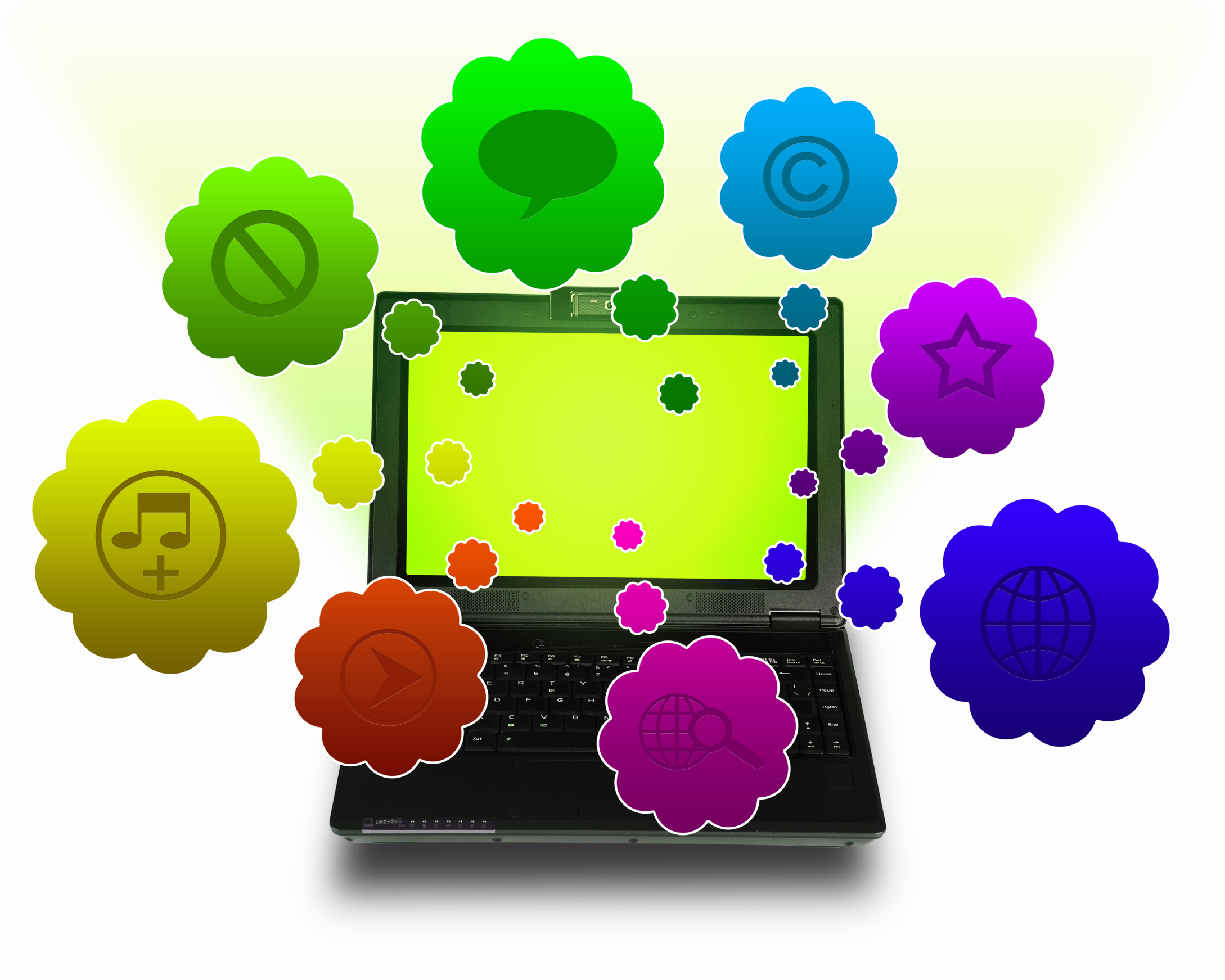When I went to school, it was all about the 3Rs, desks in rows, and a teacher lecturing from the front of the room. The past decade saw significant improvements in the application of technology to learning and 2017 became a tipping point where embedding technology into education finally moved from fringe to mainstream, remaking classrooms in the image of the future. Following is a list of fourteen such changes that have set 2018 up to be the most student-centered, transformative year ever.
1. More Chromebooks than iPads
Chromebooks and iPads have become the two most popular digital devices in classrooms (with laptops, 2-in-1 devices like Surface Pro, and Macs next). Because they serve significantly different student needs, it seemed they were destined to share the education market. What changed in 2017 is that 1) Chromebooks improved considerably from when they first entered the education market. They are now more durable, easier to use and access, and continue to be a low-cost serviceable option. 2) Cloud storage became common and affordable (or free). Classrooms now are more likely to store student files in the cloud (OneDrive or Google Drive for example) than on school servers allowing students to access their work from school and home. This is the Chromebook’s sweet spot–it predominantly works in the Cloud. What was a disadvantage five years ago is now an advantage.
For a comparison of iPads vs. Chromebooks, here’s a comprehensive look from Lifewire and here’s Forbes’ experience after 30 days with a Chromebook.
2. More online access to class materials
Where students used to rely on school servers to store classwork, which couldn’t be accessed at home, now Cloud storage is common, cheap, and easily accessed. Whether it be via Google Drive, Microsoft’s OneDrive, or another option (like Box), it’s much easier for students to start a project at school, finish at home, and then submit it via the Cloud. No worries about losing it in a backpack or having it eaten by a rambunctious dog.
3. Dedicated teacher training
A 2014 study conducted for the Bill & Melinda Gates Foundation found many teachers felt learning in a seminar or workshop — what is commonly referred to as the “sit ‘n’ get” model of professional development — didn’t work for them. It required wasted time traveling, expensive hotels and plane fares, and then sifting through too much generalization to find what suited their specific needs. In 2017, it became common to replace this sort of all-in-one training with microbadges, online courses, and personalized plans created by the teacher. Educators can access sites like Bloomboard, Annenberg, and Kyte Learning, find courses specifically suited to their needs, and take them from the comfort of their home according to their schedule.

4. Personalized student learning
Differentiated learning traditionally means offering lesson plan options that suit varied student needs. Frankly, it hasn’t been popular with teachers in the past. While the concept is great, the implementation is prohibitive in the one area teachers already don’t have enough of: time. How do they identify specific student needs, create a dozen different lesson plans to accommodate those, and then roll each out to only the student who would benefit from it?
In 2017, this was solved. Treating students as partners in learning meant teachers presented material in a variety of ways (audio, video, written, games, and more). Students then selected the approach best-suited to their individual learning style. Sites such as Kiddom made the roll-out easy by automating the general steps and letting teachers fill in the specifics. For example, a book report can be shared as a podcast, a video, or a comic as long as it satisfies standards and provides evidence of the student learning.
5. Less about textbooks and more about authentic resources
Textbooks used to be de rigueur in a classroom. Now, they’re reference material. 2017 lessons were enriched with teacher-curated resources shared through intuitive programs like Edmodo, Google Drive, and PearDeck. Teachers provided links, PDFs, videos, and other materials with the lesson plans that could be quickly changed year-to-year. No more waiting for the expensive update to a textbook. Now, teachers find the right materials (say, through sources like Teachers Pay Teachers and StructuredLearning) and push them out immediately to students.
6. Greater acceptance of technology as a tool
Using technology in teaching has long been delegated to the digitally-adept teachers. The surprise of 2017 was that 75% of teachers incorporated technology into lessons. One reason is that teacher tech training has systemically and diligently filled in the knowledge holes. Another is that digital tools are much more user-friendly, intuitive to use, and easier to setup than at any time in the past. Me, I only recommend tools that are easily understood and implemented.
7. Easier to adapt for the differentiated needs of students
Differentiating for varied student needs has always been a dream resting on a shaky foundation. Teachers would love to do this but [fill in the blank]: Who has time? Where are the resources? Don’t most students learn best with reading and lecturing? 2017’s wide breadth of tech tools makes it much easier to differentiate quickly and effectively. As tools became more user-friendly, as schools and Districts devoted more time and money to training in the use of technology, as online self-directed learning became more common (think of YouTube), teachers started to find exactly what they needed and then use it productively.
8. Focus on product rather than process
Where teachers used to provide a checklist of required pieces for a project, now, that rubric focuses on goals. Teachers provide the guidelines and suggest methods. Students select what suits their individual learning and communicating style. In this way, teachers support higher-order thinking like critical thinking and problem-solving. These skills serve students throughout life rather than just within the walls of the schoolhouse.
9. Teacher as guide
Where “guide on the side not sage on the stage” used to be a maxim thrown out to show a teacher’s commitment to change, in 2017, the former became more common than uncommon in classes. Rows of desks facing forward have been replaced with grouped “tables” where students collaborate and the teacher walks around to assist. Rubrics that focused on a ToDo list now call out the higher-order thinking required to solve problems. Teachers became less focused on answering a question (acting the part of keeper of knowledge) and more likely to help students think through the process. Proof of this change is the over 100 million students who have participated in Hour of Code, a programming activity where students learn to create a process, troubleshoot, try again, and repeat until they get the desired answer.
10. Shared responsibility
Where classrooms used to be the purview of teachers, now schools expect parents and students to participate as fully-committed partners with the teacher and school. Educators are accepting what business learned long ago: To reach student goals requires teamwork. That means collaboration, communication, critical thinking, and creativity.
For ideas on how that is happening, check out this list of parents-as-partners articles.
11. 24-hour help
Teachers used to arrive at school around 7 (ish), leave at 4 (ish) and schedule truncated and often awkward office hours. No matter work demands, parents had to accommodate that schedule. Now, teachers and parents can meet when it suits everyone’s schedule even if it’s evenings or weekends. Teachers have long worried that such an arrangement would make them on call 24 hours a day. In truth, that doesn’t happen. Most parents can meet traditional hours but those that work late now have an easier time catching up with the teacher via Google Hangouts, Skype, or another online virtual meeting forum, thus becoming committed partners in their child’s academic success. In 2017, more teachers accepted this as they would monitoring a school dance or sporting event. And, some schools even offer a stipend to offset the extra time spent in the off hours.
Additionally, with increasing availability of the Internet, students and parents can access classwork and schedules online, from anywhere, twenty-four hours a day. The stress of leaving a required book at school, losing the homework sheet, or forgetting a due date became a thing of the past in 2017 for many schools.
12, Snow days too will soon be a thing of the past
Where the inability to reach school due to weather used to mean lost class time to the teacher and a vacation day for students, 2017 marked a turning point with the acce ptance among administrators that there are alternatives. Many began to treat snow days as regular school days albeit through a virtual classroom. Teachers invite students to an internet-based classroom and run the lesson plan from their snow-bound home. Virtual schools have taken the lead in this, proving that online study can be as rigorous and effective as face-to-face activities.
ptance among administrators that there are alternatives. Many began to treat snow days as regular school days albeit through a virtual classroom. Teachers invite students to an internet-based classroom and run the lesson plan from their snow-bound home. Virtual schools have taken the lead in this, proving that online study can be as rigorous and effective as face-to-face activities.
Here are ten places that have replaced snow days with virtual school.
13. Virtual participation
When students are incapacitated through sickness or injury or out of town for unexpected reasons, teachers used to give them a pile of papers to complete. Now, 2017’s inclusive technologies make it possible to invite them to join the class virtually. Through programs like Google Hangouts (free with Google accounts), students can see what’s going on in the class, participate, even screenshare their contributions so they are fully involved in the activity.
Alternatively, some teachers tape classes and make them available to students who couldn’t attend or those who simply want to revisit concepts.
14. Gamification of classes
In the past, gamifying lessons annoyed administrators and frightened parents. By 2017, the gamification of learning finally had the successful track record that allowed it to be accepted as an effective and engaging approach to teaching. Developers stepped up to meet the education interest in teaching history, math, literature, and more. Some of the most popular focus on critical thinking, problem-solving (through choose-your-own-adventure options), and perspective-taking (such as the differing colonial viewpoints on the American Revolution) and ask students to make decisions based on the information they receive. Studies show that gamifying learning grabs and keeps student attention, inspires them to learn, and sticks with them longer than any other traditional method.
***
Did I miss a trend that motivated you in 2017? Let me know in the comments!
— published first on TeachHUB
Jacqui Murray has been teaching K-18 technology for 25 years. She is the editor/author of over a hundred tech ed resources including a K-8 technology curriculum, K-8 keyboard curriculum, K-8 Digital Citizenship curriculum. She is an adjunct professor in tech ed, Master Teacher, webmaster for four blogs, an Amazon Vine Voice, CAEP reviewer, CSTA presentation reviewer, freelance journalist on tech ed topics, and a weekly contributor to TeachHUB. You can find her resources at Structured Learning. She is also the author of the tech-thriller series, To Hunt a Sub and Twenty-four Days.





































